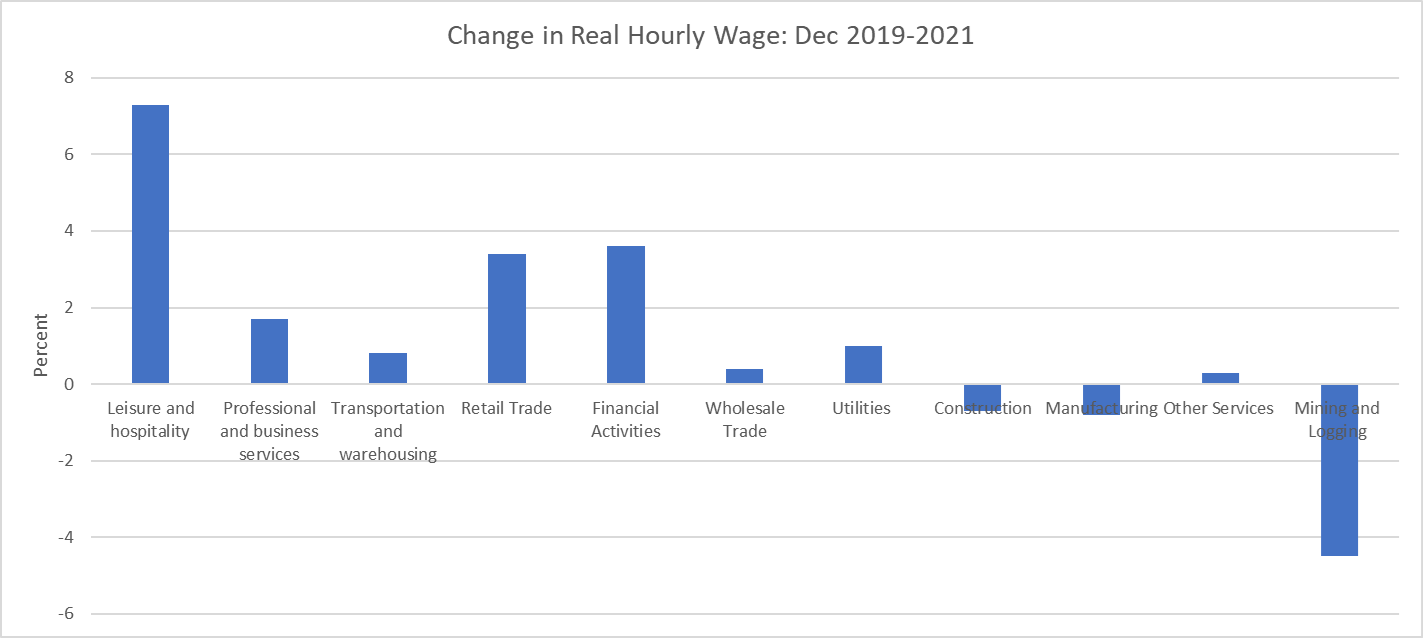January 22, 2022
Yes, that was the clear meaning of a front page article telling readers how bad things are for workers today. The piece told us:
“In interviews with more than a dozen workers, many said that despite considerable pay raises — as much as 33 percent, in some cases — they were still struggling to cover basic expenses. Several workers said they had taken second jobs to keep up with rising costs for groceries, gas and rent. And many said their budgets will be even more strained once student loan payments resume in May.”
Of course, the Washington Post was trying to tell us how bad things are now, under President Biden, not how bad they were two years ago when Donald Trump was still in the White House. But fans of arithmetic can easily determine that however horrible things might be now for workers, they were worse two years ago when real wages were lower for the vast majority of workers.
The chart below shows the change in real wages over the last two years for the same industry categories featured in the Washington Post article.

Source: Bureau of Labor Statistics.
As can be seen, real wages rose over these two years in all but three industries, manufacturing, construction, and mining and logging. Together, these three industries account for just over 14 percent of total employment.
While workers in these sectors saw declines in real wages over the last two years, workers in all other sectors on average have higher real wages today than they did two years ago. In many cases, the real wage is substantially higher. For example, in retail trade, the real average hourly wage is 3.4 percent higher. In the financial activities sector, it is 3.6 percent higher, and in the huge leisure and hospitality sector, which employs more than 15.7 million workers, wages are up by 7.3 percent.
This means that if workers are experiencing serious hardship today, things must have been really awful for them in December of 2019 when most workers had lower real wages. I don’t believe the Washington Post had front page pieces making this point at the time.
It is worth commenting on the use of two-year wage growth rather than the last year. There was a large composition effect that raised wages in 2020 when many low-paid workers were laid off. The composition effect went in the opposite direction, lowering average wages in 2021 when these low-paid workers were rehired.
This is the reason why honest analysts look at the two years together, not just 2021 in isolation.







Comments